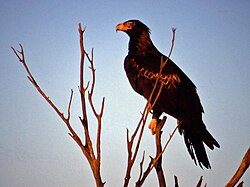The Northern Territory is one of the Australia's territories, and has established several territorial symbols and emblems.
The Northern Territory is one of the Australia's territories, and has established several territorial symbols and emblems.
| Symbol | Name | Image | Adopted |
|---|---|---|---|
| Territorial Flag | Flag of the Northern Territory |  | 1 July 1978 |
| Territorial Coat of arms | Coat of arms of the Northern Territory |  | 1 July 1978 |
| Territorial Animal Emblem | Red kangaroo Macropus rufus |  | 1975 |
| Territorial Bird Emblem | Wedge-tailed eagle Aquila audax |  | 1 July 1978 |
| Territorial Floral Emblem | Sturt's desert rose Gossypium sturtianum |  | 1974 |
| Territorial Colours | Black, White and Ochre | ||
| Territorial Government Logo | Northern Territory Government Logo | ||